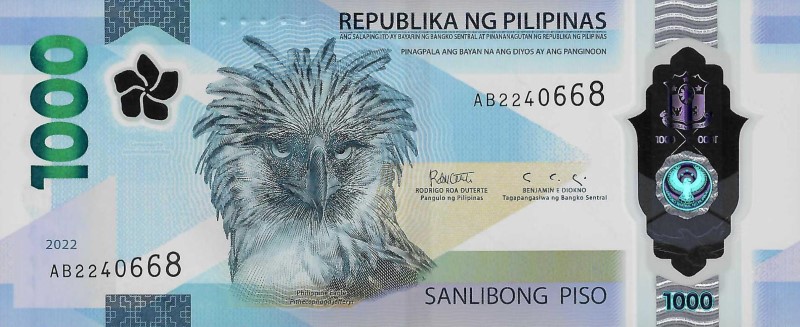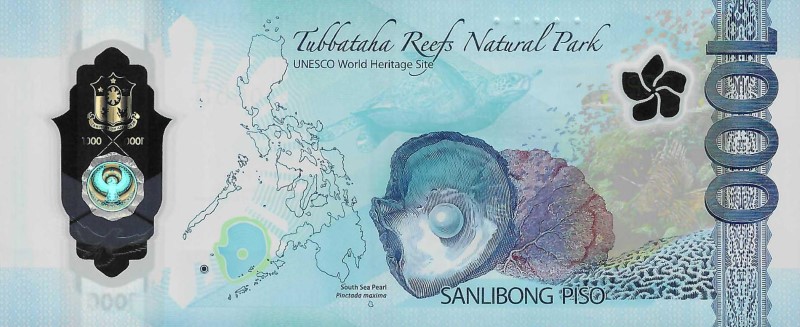Will Philippines completely switch to polymer?
A new banknote series, which began in April 2022 with the 1000-peso banknote, will focus on fauna and flora in the Philippines as well as those with positive Filipino images like the tamaraw (Mindoro dwarf buffalo or Bubalus mindorensis), sampaguita (Jasminum sambac, a sweetly scented tropical flower) et al. instead of heroes.
The Philippine eagle (Pithecophaga jefferyi), the national bird of the Philippines, takes center stage on the obverse of the new polymer 1000-peso banknote. Also known as the monkey-eating eagle or great Philippine eagle, it is a critically endangered species of eagle endemic to forests in the Philippines. The Philippine eagle is considered the largest of the extant eagles in the world in terms of length and wing surface. 

The Bangko Sentral ng Pilipinas (BSP) announced that they plan to release "a few million" pieces of the polymer P1000 banknote in 2022. The BSP is trying to find ways to make banknotes safer, more durable and less prone to transmitting germs compared to traditional paper banknotes.
"We’re considering testing with a few hundred million pieces of banknotes. It has to be issued, it has to be circulated nationwide, it has to be used by the public so we can see how it behaves and we can test the banknote itself, and we can also get feedback on how our people, our public would handle them." Tangonan, Deputy Governor for Payments and Currency Management, stated. "The bacterial count on the banknote—that should be less because it is one of the reasons why we would like to test polymer. There is the economic factor of it. Durability and cost, and then there is also the environmental impact of it." Tangonan added.
The banknotes have the same look as the current 1000-piso note but carry new security features. While the new polymer bills are smoother than the current paper bills, people will still recognize them. He added that after the test, they measure the data to determine if they should push through with transitioning to polymer banknotes. The BSP said its test could run for at least three years, to prove if the polymer notes truly last 2.5 times longer than traditional banknotes under Philippine conditions. The current banknotes last an average of 18 months or 1.5 years each.
This is not the first time the BSP has proposed the use of polymer banknotes. It was suggested in 2009, but the proposal was not adopted. Tangonan says the COVID-19 pandemic, as well as heightened environmental concerns, have pushed them to propose the use of polymer banknotes again.


